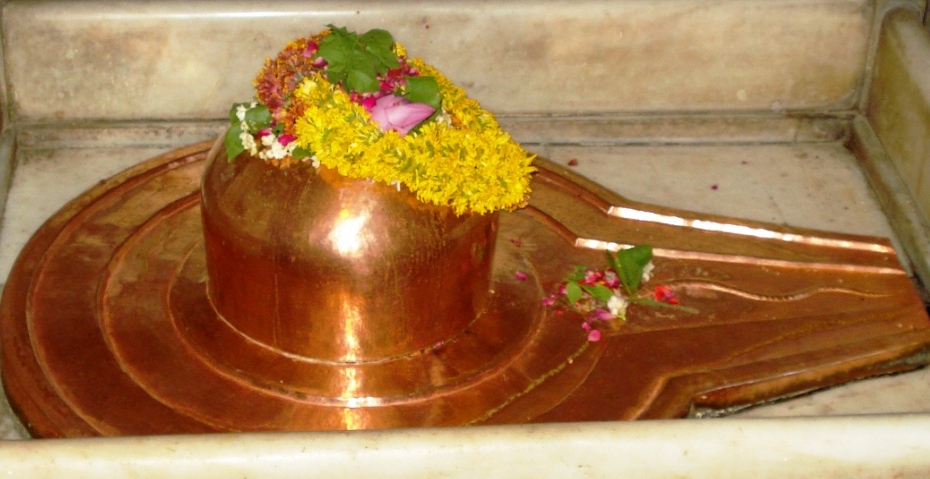Varanasi, the eternal city on the banks of the Ganga, is a labyrinth of narrow lanes, bustling ghats, and sacred temples. Amidst this spiritual mosaic lies the Someshwar Mahadev Temple, a lesser-known yet profoundly serene shrine dedicated to Lord Shiva. For travelers seeking authentic experiences, this temple offers a perfect blend of devotion, history, and local culture.
Visiting Someshwar Mahadev is not just about seeing a temple; it’s about feeling the pulse of Varanasi, connecting with centuries-old traditions, and exploring the hidden corners of this vibrant city. Here’s a comprehensive guide to everything you need to know, from legends and rituals to nearby attractions and local experiences.
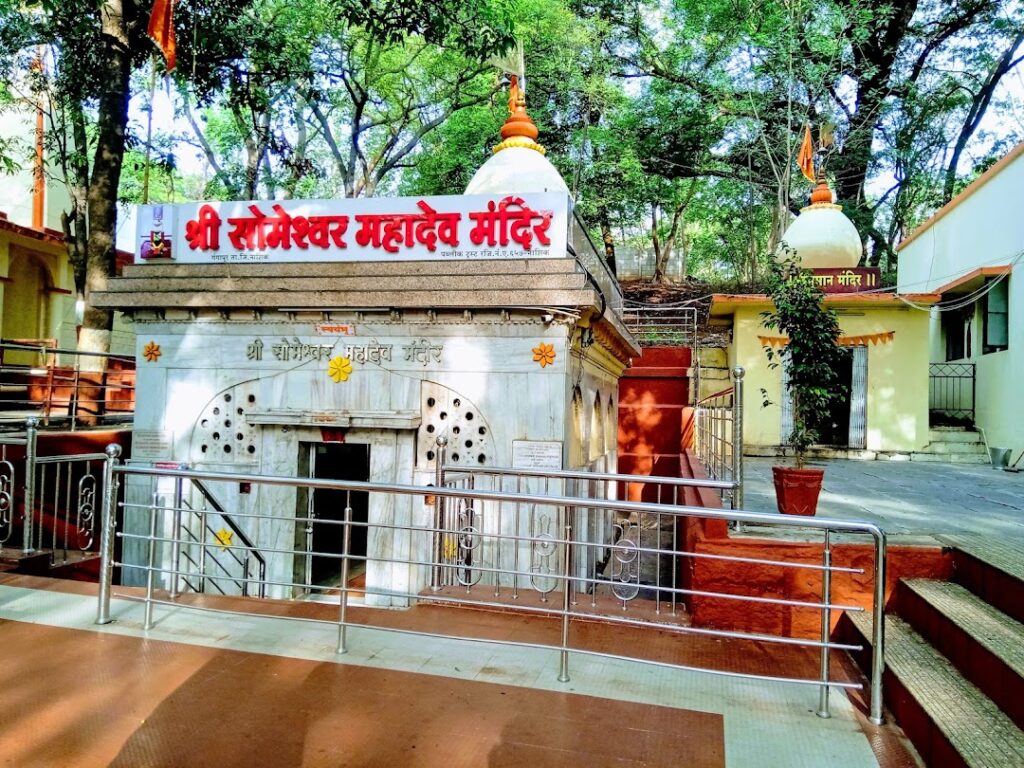
The Spiritual and Historical Significance
Someshwar Mahadev Temple is dedicated to Lord Shiva, one of the principal deities in Hinduism, revered as the destroyer of evil and the embodiment of spiritual wisdom. Unlike the crowded Kashi Vishwanath Temple, Someshwar Mahadev offers a more intimate connection with the divine.
The Legends Behind the Temple
Local lore suggests that the temple dates back several centuries, though exact historical records are scarce. Devotees believe:
- The Shiva Linga here is swayambhu (self-manifested), making it a sacred site for centuries.
- Ancient sages and wandering ascetics used this spot for meditation, drawn by the tranquil energy of the nearby river.
- Pilgrims believe that worshipping at Someshwar Mahadev can cleanse sins, grant marital harmony, and bring prosperity to families.
This combination of legend, devotion, and history gives the temple a mystical aura, making every visit deeply spiritual.
Architecture and Temple Layout
Someshwar Mahadev may not be as grand as some of Varanasi’s larger temples, but its architecture exudes charm and simplicity:
- Sanctum Sanctorum: Houses the main Shiva Linga, often adorned with flowers, milk, honey, and sacred ash.
- Courtyard: Small but peaceful, allowing devotees space for prayers, meditation, and small group rituals.
- Stone Carvings: The temple walls feature traditional carvings depicting Hindu mythology, with motifs of Nandi (the sacred bull) and scenes from Shiva’s legends.
- Entrance and Courtyard Bells: The sound of the temple bell ringing as devotees enter sets the spiritual tone instantly.
The temple’s intimate size and unhurried atmosphere allow visitors to absorb the spiritual energy fully, away from the crowded streets of Varanasi.
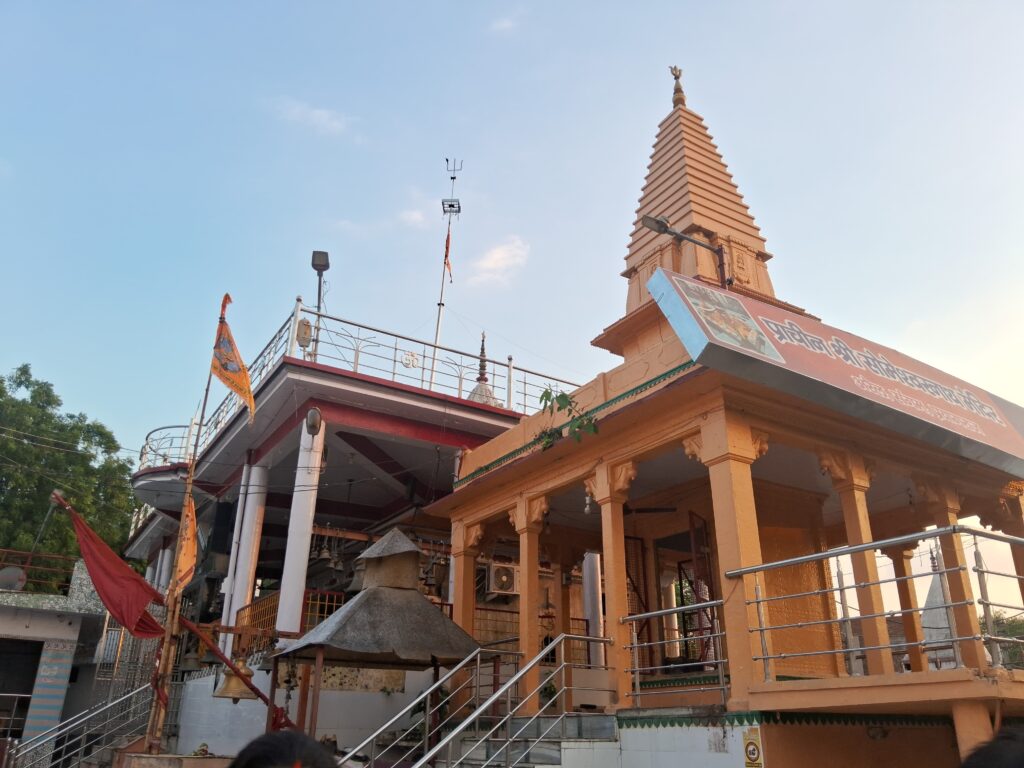
Visiting Experience
Visiting Someshwar Mahadev is an experience that changes depending on the time of day.
Morning Darshan
- The early hours are magical. Mist from the nearby river mingles with temple incense, creating a serene ambiance.
- Devotees light lamps and offer flowers, while the rising sun illuminates the stone carvings.
- A morning visit allows for quiet meditation, uninterrupted chanting, and witnessing the rituals performed by local priests.
Afternoon Calm
- During the afternoon, the temple sees moderate footfall. Travelers can observe the local community performing daily rituals, such as abhishek (ritual bathing of the Shiva Linga) and offering of milk and honey.
- This is also a great time to explore the courtyard, talk to temple priests, and learn stories about the temple’s origin and significance.
Evening Aarti
- Evening aarti here is calm yet powerful. While smaller than the grand ceremonies at Kashi Vishwanath, it has its own charm.
- Lamps flicker in the fading sunlight, chants echo through the temple walls, and devotees participate with devotion.
- Spending time during the aarti allows travelers to immerse themselves in the spiritual atmosphere while observing local traditions.
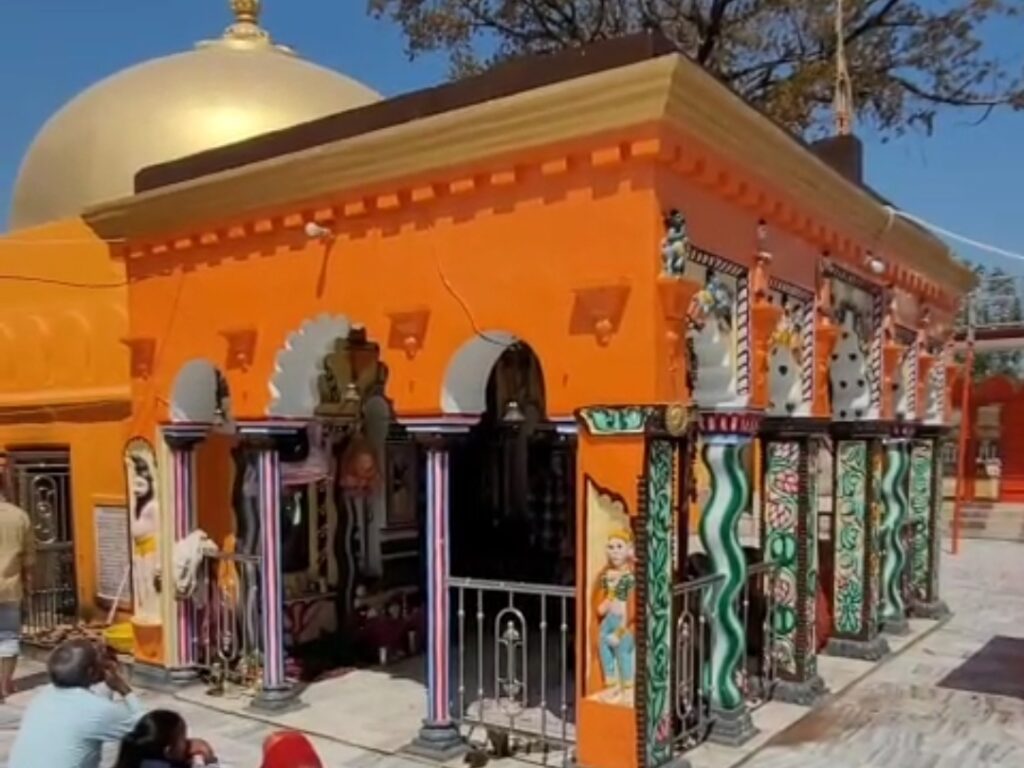
Rituals and Traditions
Someshwar Mahadev is not just a place for darshan—it’s a living center of ritual and devotion:
- Abhishek: Devotees pour water, milk, and honey over the Shiva Linga, a ritual believed to purify both body and soul.
- Lighting Diyas: Small oil lamps are lit and floated along the temple courtyard or nearby river, symbolizing enlightenment.
- Chanting and Mantras: Visitors can join in chanting “Om Namah Shivaya,” enhancing the spiritual energy of the space.
- Festivals: Maha Shivratri is the most significant festival here, celebrated with special rituals, processions, and devotional music.
The temple’s smaller scale makes these rituals more personal, allowing visitors to feel directly connected with the divine presence.
Nearby Attractions and Experiences
Here’s a detailed guide to nearby attractions and experiences that will make your Varanasi trip unforgettable.
The Ghats of Varanasi
No visit to Varanasi is complete without exploring its ghats, the sacred steps leading to the Ganga River. Some of the most captivating ghats near Someshwar Mahadev Temple include:
1. Assi Ghat
- Distance: About 3 km from the temple
- Experience: Early morning is magical, as locals perform yoga, perform ritual baths, and boats glide quietly on the river.
- Tip: Take a boat ride from Assi Ghat to experience the ghats from the river, watching the city wake up in golden light.
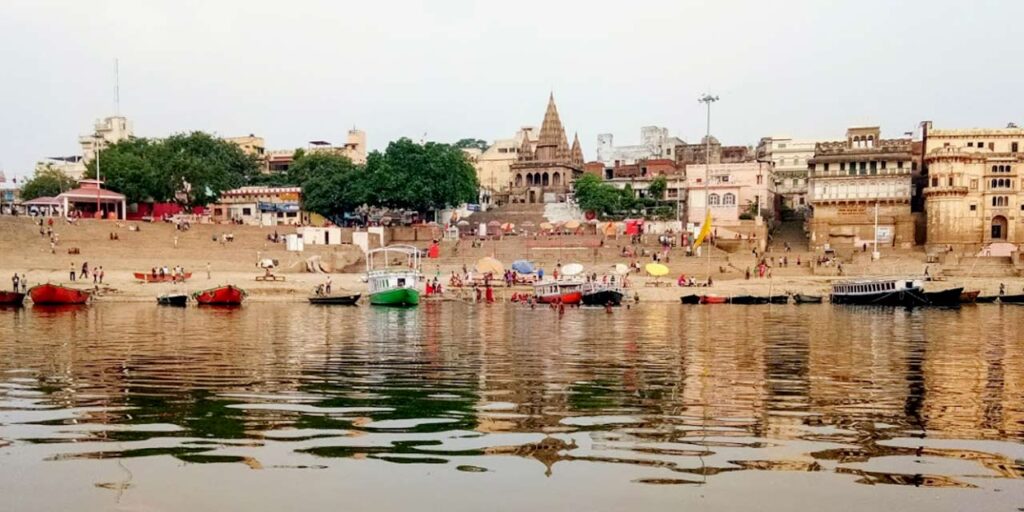
2. Dashashwamedh Ghat
- Distance: Around 2.5 km
- Experience: Known for its evening Ganga Aarti, the ghat comes alive with lamps, chants, and rhythmic drumbeats.
- Photography Tip: Capture the aarti from a boat for reflections of lamps on the water—a truly mystical view.
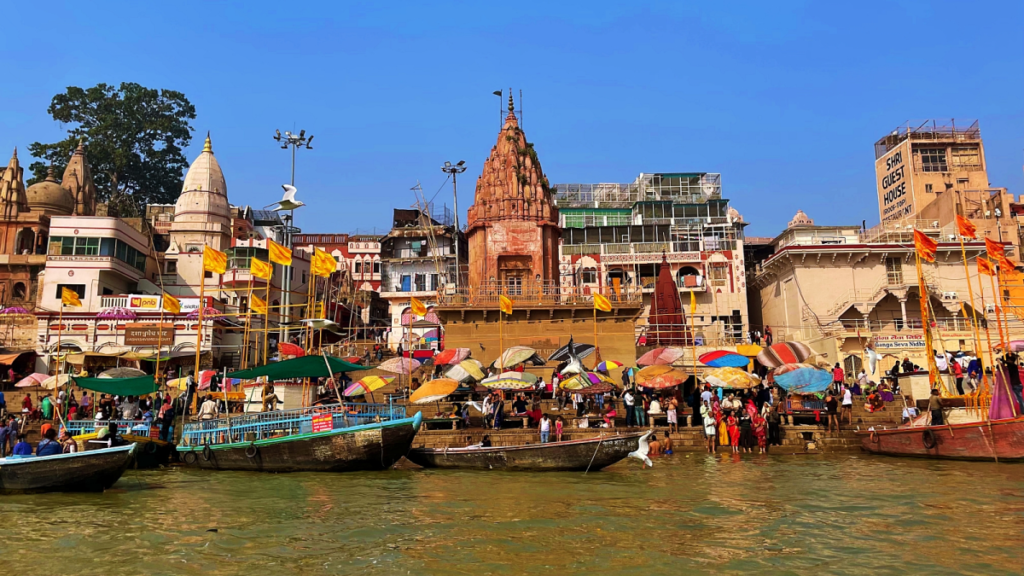
3. Manikarnika Ghat
- Distance: 3 km from the temple
- Experience: One of the most sacred ghats, famous for cremation rituals. It’s not a touristy spot for casual sightseeing, but visiting nearby areas gives insight into Varanasi’s deep-rooted spiritual traditions.
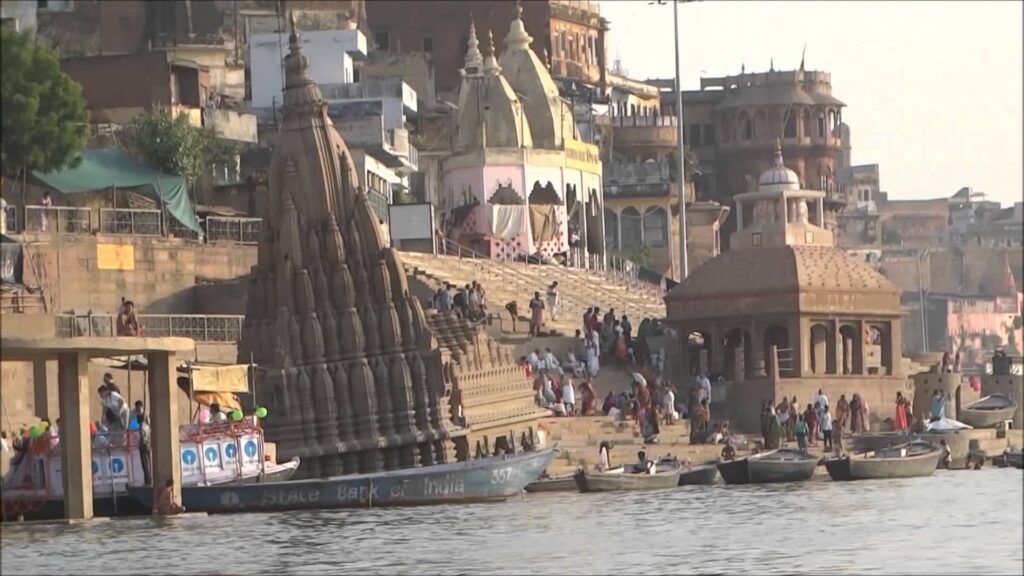
Other Temples Nearby
While Someshwar Mahadev itself is a gem, Varanasi is dotted with temples, each telling its own story:
Kashi Vishwanath Temple
- Distance: About 1.5 km
- Experience: The iconic temple of Lord Shiva, bustling with devotees, priests, and rituals. Visiting here after Someshwar Mahadev gives a sense of the contrast between intimate and grand devotion.
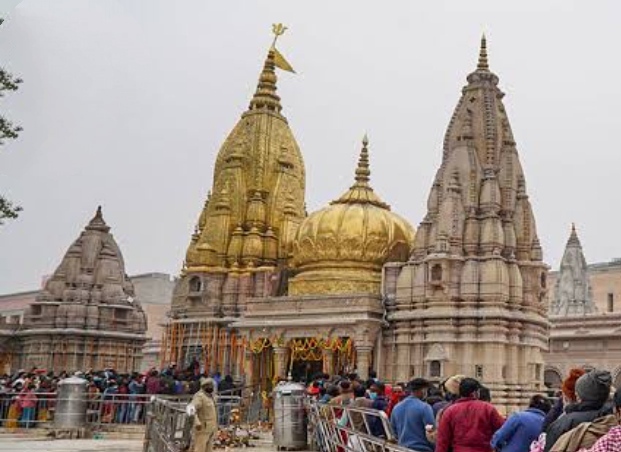
Sankat Mochan Hanuman Temple
- Distance: Around 4 km
- Experience: Dedicated to Lord Hanuman, this temple is known for its energy and regular bhajans. It’s a lively place, especially during Tuesdays and Saturdays.
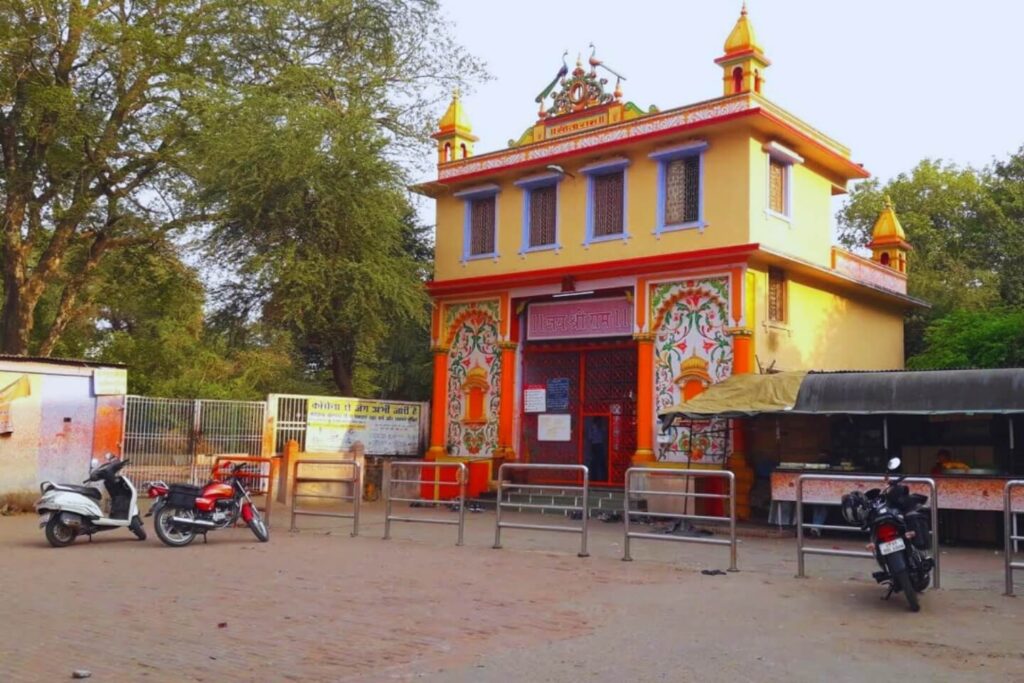
Durga Temple (Vishwanath Gali)
- Distance: 1 km
- Experience: A smaller but colorful temple, perfect for observing local devotees and understanding daily worship practices.
Exploring these temples allows travelers to immerse themselves in the spiritual fabric of Varanasi, moving from the serenity of Someshwar Mahadev to more bustling temple environments.
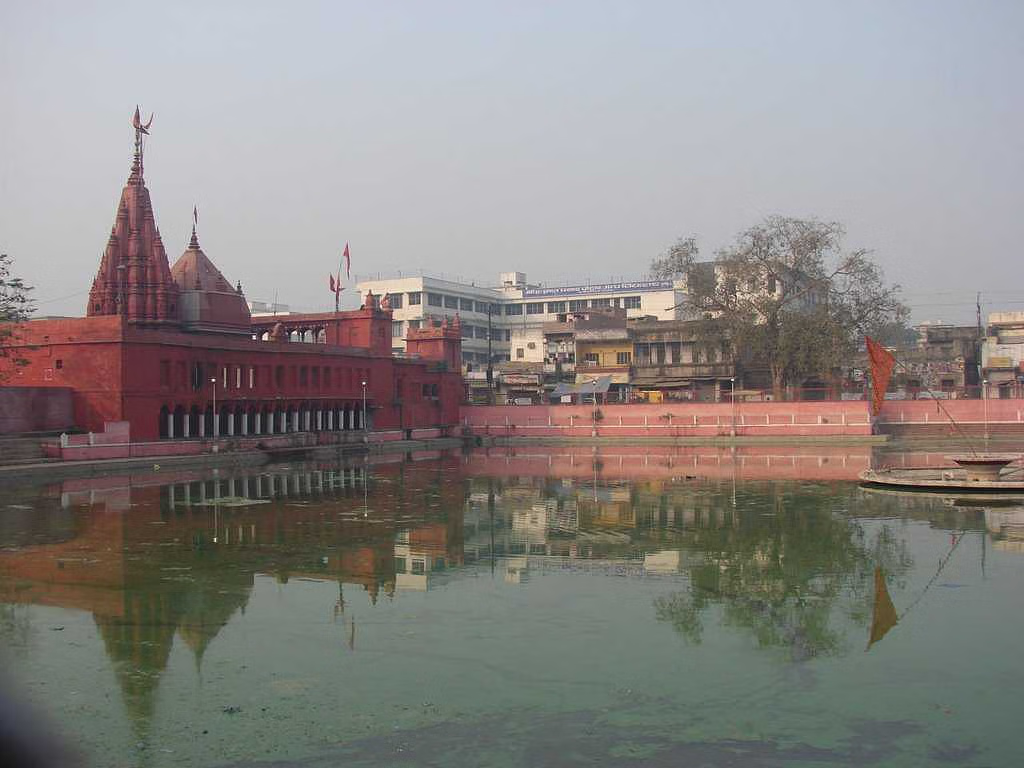
Local Markets and Streets
The streets surrounding Someshwar Mahadev Temple offer a glimpse into Varanasi’s vibrant local life:
Vishwanath Gali
- Narrow lanes filled with prayer items, incense sticks, and handicrafts.
- Ideal for picking up souvenirs like rudraksha beads, brass idols, and traditional fabrics.
- Street food stalls here offer local snacks like kachaudi, jalebi, and samosas, perfect for a quick bite.
Thatheri Bazaar
- Famous for Banarasi silk weaving and textile shopping.
- Observing artisans at work gives insight into the city’s centuries-old craft traditions.
- Tip: Bargaining is common—engage with shopkeepers respectfully to get the best deals.
Walking through these streets after visiting Someshwar Mahadev Temple provides a sensory experience, combining sights, sounds, and smells that define Varanasi.
Cultural Stops
- Small shrines, old libraries, and musicians performing classical ragas nearby offer cultural immersion.
- These stops make your visit holistic, combining spirituality, history, and local culture.
Tips for Travelers
- Timing: Early morning or late afternoon is best to avoid crowds.
- Dress Modestly: Traditional attire is appreciated, especially when participating in rituals.
- Participate Respectfully: Join aarti or rituals only if comfortable; follow the guidance of priests.
- Photography: Courtyard and exterior photography is fine; avoid photographing inside the sanctum unless allowed.
- Combine Visits: Plan a day covering Someshwar Mahadev, Kashi Vishwanath, nearby ghats, and markets for a complete experience.
- Local Interaction: Talking to locals can reveal hidden legends, festival stories, and spiritual insights.
Cultural and Spiritual Insights
Spending a few hours at Someshwar Mahadev Temple allows travelers to observe the spiritual fabric of Varanasi:
- Devotees of all ages perform rituals with sincerity.
- Locals bring flowers, milk, and sacred ash as offerings, showing devotion rooted in centuries of tradition.
- The temple is a quiet reminder that not all of Varanasi’s spirituality is found at the crowded ghats; some is hidden in small, serene shrines.
This cultural depth makes a visit here an authentic experience, far from typical tourist paths.
Seasonal Reflections
n this guide, we’ll explore seasonal reflections at Someshwar Mahadev Temple, helping travelers plan their visit for the best spiritual, cultural, and immersive experiences.
Spring (March – May)
Spring is one of the most beautiful seasons to visit Varanasi, and the temple is no exception. The weather is mild, streets are lively, and the Ghats near Someshwar Mahadev Temple come alive with activity.
Spiritual Atmosphere
- Morning visits are especially serene during spring. The gentle sun filters through temple windows, and flowers in the courtyard add vibrant colors.
- Devotees often perform rituals with fresh seasonal flowers, enhancing the spiritual ambiance.
Cultural Experience
- Nearby markets around Vishwanath Gali showcase spring fabrics, flowers, and local crafts.
- Local festivals like Holi add energy and color. While Holi is celebrated with playfulness across Varanasi, Someshwar Mahadev Temple remains a quiet spiritual oasis amidst the revelry.
Nature and Scenery
- The riverbanks and nearby ghats bloom with seasonal flora. Walking along Assi or Dashashwamedh Ghat in spring is perfect for photography and meditation.
- The soft morning breeze carries the scent of fresh flowers, incense, and the river—creating a multi-sensory experience.
Pro Tip: Spring mornings are ideal for meditation or quiet darshan at the temple. The combination of mild weather, natural beauty, and spiritual energy is unmatched.
Summer (June – July)
Summer in Varanasi can be hot, but it brings a unique perspective to the city and Someshwar Mahadev Temple.
Spiritual Observations
- Devotees still flock to the temple, though the mornings are preferred due to cooler temperatures.
- Abhishek rituals and evening aarti can be observed in relative calm before the afternoon heat sets in.
Cultural and Local Insights
- Streets are bustling with locals buying essentials to cope with summer. Visiting nearby markets and lanes gives travelers a glimpse into everyday Varanasi life.
- Local sweets and beverages like lassi, coconut water, and fresh fruit juices provide relief from the heat and are a cultural experience in themselves.
Seasonal Challenges
- Afternoon temperatures can be high, so carrying water and wearing light clothing is recommended.
- Roads around ghats can be dusty, but the early morning serenity of the temple offsets this minor inconvenience.
Pro Tip: If visiting during summer, plan early morning or late evening visits to enjoy the temple and nearby attractions comfortably.
Monsoon (July – September)
Monsoon season brings rain, mist, and a unique charm to Varanasi, transforming the atmosphere around Someshwar Mahadev Temple.
Spiritual Experience
- The temple takes on a mystical aura during light rains, with the sound of raindrops blending with the bells and chants.
- Devotees often offer prayers for rain blessings, a tradition reflecting the interconnection of spirituality and nature.
Cultural Insights
- Streets and alleys near Vishwanath Gali are filled with locals navigating puddles and rain-soaked lanes, giving travelers a real sense of city life during monsoon.
- Markets sell umbrellas, raincoats, and fresh produce, adding to the sensory richness of a visit.
Nature and Scenery
- The Ganga River swells slightly, reflecting the cloudy sky and surrounding temples.
- The lush greenery along the ghats and temple surroundings becomes vibrant and photogenic.
Caution
- Heavy rains can make roads slippery. Avoid visiting during intense downpours.
- While the monsoon atmosphere is beautiful, outdoor walking and boat rides may be limited.
Pro Tip: Carry an umbrella and waterproof footwear. A visit during light showers, especially early morning or evening, can be incredibly serene.
Autumn (October – November)
Autumn is perhaps the most celebrated season in Varanasi. The air is crisp, skies are clear, and festivals bring energy to the streets. Visiting Someshwar Mahadev Temple during this time is a memorable experience.
Spiritual Vibrancy
- The temple sees increased footfall during Navratri and other autumn festivals.
- Lighting diyas, participating in evening aarti, and joining local rituals create a profound spiritual connection.
Cultural Festivities
- Dev Deepawali, celebrated about fifteen days after Diwali, lights up the ghats with thousands of lamps. The temple and surrounding areas are a part of this city-wide celebration.
- Local music, dance, and street performances enrich the visitor experience.
Ideal Conditions for Exploration
- Cool mornings and pleasant afternoons make walking through ghats, temples, and markets enjoyable.
- Photography enthusiasts can capture clear skies, colorful streets, and vibrant cultural displays.
Pro Tip: Autumn is ideal for combining a spiritual visit to Someshwar Mahadev with exploring nearby attractions and participating in local festivals.
Winter (December – February)
Winter in Varanasi brings misty mornings, cooler temperatures, and a sense of calm. Visiting Someshwar Mahadev Temple during this season offers a peaceful, reflective experience.
Spiritual Serenity
- Early morning darshan is enhanced by mist rising from the river, creating a mystical and meditative atmosphere.
- The temple feels quieter, allowing for longer, uninterrupted reflection and prayer.
Cultural Observations
- Streets and markets are decorated for winter festivals like Makar Sankranti and New Year celebrations.
- Locals and devotees wear traditional shawls and winter attire, adding a distinct visual charm to the temple surroundings.
Nature and Scenic Beauty
- Mist over the Ganga and temple rooftops creates a dreamlike ambiance perfect for photography or quiet meditation.
- Winter sunsets over the ghats provide breathtaking views, and evening aarti feels more intimate in the cooler air.
Pro Tip: Carry a warm jacket, especially if attending early morning darshan or evening aarti. Winter is perfect for those who enjoy solitude and reflection in spiritual spaces.
Reflection on the Year-Round Experience
Each season brings its own personality to Someshwar Mahadev Temple:
- Spring: Fresh, colorful, and lively.
- Summer: Warm, energetic, and vibrant with city life.
- Monsoon: Misty, reflective, and mystical.
- Autumn: Festive, colorful, and culturally immersive.
- Winter: Quiet, serene, and meditative.
By understanding seasonal variations, travelers can choose the best time to visit based on their preferences—whether seeking festivals, solitude, photography, or a calm spiritual experience.
Practical Tips for Seasonal Visits
- Plan According to Weather: Early morning visits are generally the best in all seasons.
- Carry Essentials: Water, umbrellas, light clothing in summer, warm layers in winter.
- Combine Experiences: Pair temple visits with ghats, markets, and cultural performances relevant to the season.
- Observe Local Customs: Seasonal festivals may have specific rituals—participate respectfully.
- Photography Considerations: Misty mornings, vibrant autumn festivals, and clear winter skies offer unique photographic opportunities.
FAQs (10)
Q1. Where is Someshwar Mahadev Temple located?
It is situated in Uttarkashi town, on the banks of the Bhagirathi River in Uttarakhand.
Q2. Which deity is worshipped at Someshwar Mahadev Temple?
The temple is dedicated to Lord Shiva, revered as Someshwar Mahadev.
Q3. What is the history of the temple?
The temple dates back several centuries and is linked to ancient Hindu legends of Shiva worship in the Himalayas.
Q4. What is special about this temple?
It combines spiritual significance with scenic surroundings, making it a peaceful pilgrimage spot.
Q5. When is the best time to visit Someshwar Mahadev Temple?
March to June and September to November are ideal for pleasant weather and clear views.
Q6. What are the temple timings?
The temple opens early morning and closes in the evening, with regular aarti sessions.
Q7. Are there festivals celebrated here?
Maha Shivaratri and Shravan month are celebrated with devotion and rituals.
Q8. How can one reach Someshwar Mahadev Temple?
It is accessible by road from Rishikesh, Dehradun, and Gangotri; the nearest railway station is Rishikesh.
Q9. Is there an entry fee to visit the temple?
No, visiting the temple is free for all devotees.
Q10. Are accommodations available nearby?
Yes, Uttarkashi offers guesthouses, dharamshalas, and hotels for pilgrims.

